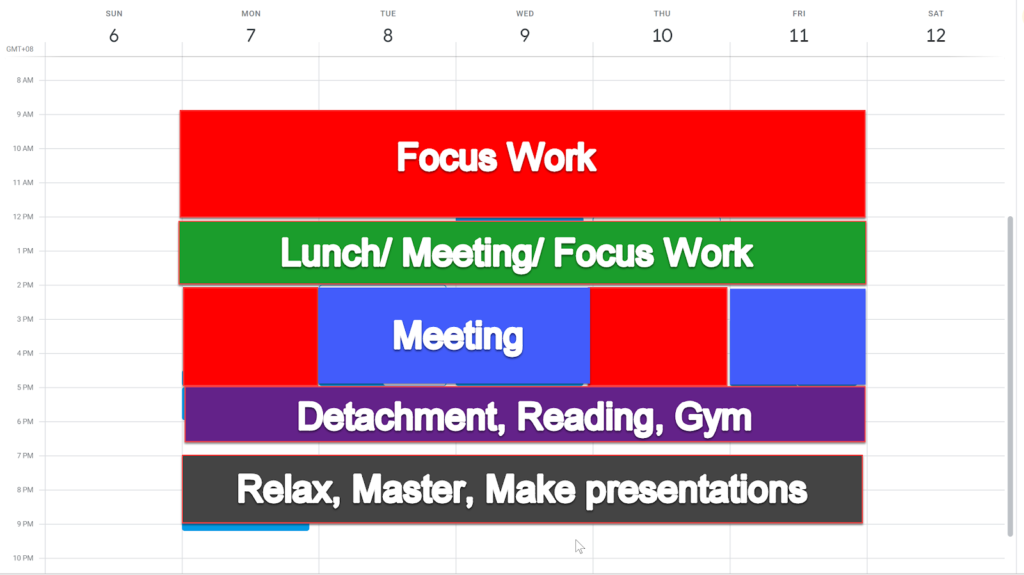
“How do you become a top performer as a GoJek Driver?”
“Simple, you need to get your daily bonus (primary objective) by positioning yourself to receive many good trips (secondary objective) ” — Gojek Handbook
The Encounter With an Online Driver and what it taught me as a data scientist
It was a hot day. I dished out my Gojek app (similar to Uber Online Driver Service) and arranged to depart to my girlfriend’s residence.
With a smile and tidy clothes, he started a small chat with me which led to an hour conversation and inspired me to write this article.
As a data scientist, I felt his sharing was meaningful in my professional life as a data professional and hopefully yours.
The Economy of GoJek Online Drivers
The reasons for moving his job
- Better pay: he receives twice the income compared to his previous job as a truck driver.
- Flexible working schedule: He starts at 07.30 then comes home at 20:00. Long working hours, but it is because he aims to receive the Bonus (Income Source).
- Community: There are events for online drivers. In each Jakarta municipality, there are “Clans” and “Groups”. This adds on to the sense of belonging and camaraderie of Gojek Drivers.
Income Source
- The income per trip: According to him, a driver gets around 80% of each trip, the other 20% is paid as the Gojek account service. This means if we assume a regular trip around 50K IDR (5 USD), the driver gets 40K IDR (4 USD) per trip. Bear in mind that each trip needs to account for traffic. If the traffic is bad, that trip can take 3 hours rather than an hour. That means the expected income from 40K IDR/hour will drop to 13K IDR/hour. The best performing drivers would be able to avoid bad traffic and maximize their income/hour.
- Bonus. This is the main reason why a lot of online drivers work long hours. Each day, the driver will need to complete min 21 trips to get a 260k IDR bonus (26 USD). This is why online drivers can work up to 9–10 hours per day (excluding break).
Expense
- Oil Expenses: A Gojek Driver will need to purchase car fuel on his own. This means an additional 200k IDR (20 USD) each good day.
- Car Rental: He needs to rent a car every day. According to him, there are many car rentals for online drivers up to 120k IDR (12 USD) per day.
- Accidents: Accidents occasionally happen. Fortunately, Gojek Drivers can use car rentals/Gojek insurances. However, on minor accidents, he will choose to ignore the damage because of opportunity costs: the time it takes to fix can otherwise be used to earn revenue.
Why would I fix my car? if within an hour, I can get an additional 50K (5 USD) extra?
Net Income per day
Counting all revenue, he earns an approximate 600k IDR (60 USD) income and 280k IDR (28 USD) net income per day. Ultimately, this is a good income considering the rate of the average wage in Jakarta which is 250k IDR (25 USD per day).
Online Drivers Key Objectives
I would love to formulate his key objective as this.

In simple English: To maximise the number of trips within the shortest amount of time until the bonus is met.
To do that, he needs to account for many different constraints: traffic jams, health conditions, and accidents.
The Similarity to Data Scientist Key Objectives
Similarly, I would love to plot my key objective as the following:

In simple English: To maximise the number of impacts within the shortest amount of time until a certain minimum objective is met (MVP-Minimum Viable Product).
To do that, I need to account for many constraints: team meetings, flurries of non-priority tasks, and unforeseen circumstances.
I found that this key objective is relevant to me as a data scientist.
At Google, we have the Performance System called Objective Key Results (OKR) where your performance is purely measured by your impacts.
Here are some of the common OKRs that I used (cloaked to not infringe Google’s blogging policy).
Utilise [data…] to identify unknown phishing campaigns (objective)
Write X approved campaigns protecting X users per week (key results)
Launch a new ML model in production, improving its recall by X% (key results)
Simply put, these are examples of impacts metrics (key performance indicators):
- How many users are protected by our abuse detection ML models?
- What is the improvement in our detection quality (precision, recall, etc)?
- How do you communicate the complexities and receive stakeholders (engineers, business stakeholders, supports, etc) buy-in?
The 3 Productivity Strategies for Data Scientists: Maximise your Impacts
1. Know your Priorities as a data scientist
One of the biggest enemies of Online Driver is the traffic jam. A bad driver would accept every request. A good driver prioritizes the Income per Hour on every trip.
Similarly, the worst thing you could do as a data scientist is to accept every assignment and idea.
Most of the project requests you receive as a data scientist will have unknown impacts and feasibility (imagine projects to tune ML/make a new recommender/ cluster multiple site groups).
You will need to assess each project.
For example, should you build on an existing model? Should you action the task or kill it and move on?
Once you ranked them by Impact/Hour (low hanging fruits), position yourself in the right project and plan your day to deliver impacts.
As a data scientist, ask why do I take this project?
Does this project produce an action or support to sustain?
If no, then let it go. This decision is your biggest asset to avoid inefficiency and achieve key objectives.
I have a data scientist friend who forgot the importance of Exploratory Data Analysis (EDA) and ended up wasting hours implementing an ML model that otherwise can be replaced with rule-based (if-else) logic.
Many data scientists are fixated to implement technically complex models without understanding the business problem well. Too often, we lost sight of the impacts. This is not how to build your portfolio.
Focus on the Impacts/Hour in everything that you do.
2. Game the Constraints and Key Objectives
This is the Gojek Driver’s schedules.
- 05.30–10.00: Markets and neighborhoods
- 10.00–16.00: City areas
- 16.00–20.00: Shopping Centers
- 20.00–21.30: Home Area
There is logical reasoning behind this schedule. First of all, he maximises short trips in the morning by positioning himself at the market to improve his chance of receiving requests from shoppers.
Since most people will go to the markets near their home, he can accumulate the volume of trips he needs early in the morning (eat the big frog) while avoiding rush hour.
Once the rush hour is over, he starts taking city requests and stations himself at city centers to take long-distance orders. Finally, after 8 pm, he would look for the trip which gets him home easily.
By knowing his objectives, he has the game plan to achieve the key results without burning out.
The Data Scientist Professional Game Plan

Similarly, game your performance.
If you work in an open office, find ways to a quiet and secluded place to conduct deep work.
Find projects which relate to your interest and needs.
Communicate to stakeholders and confirm the ground truth as early as possible.
If you find yourself overwhelmed, then delegate the tasks.
By planning your game plan, you avoid unnecessary wastage ahead and focus on delivering impacts
Take Actions and maximise the likelihood for you to reach your key objectives.
3. Invest in Smart Relationships Without Clutter
As a driver, he found that the Gojek clan is important but soon found himself overwhelmed with the clutter.
He quit the clan and collaborated with a small group of senior GoJek Drivers.
This helps him make smarter relationship investments where each driver helps each other in productivity.
Invest in collaboration with other data scientists
Similarly, as a data scientist, your goal is to find yourself in the middle of people smarter than you.
Establish relationships with them with a clear objective and don’t let your friendships and networks clutter your productivity.
Invest time in your close friends and data-minded peers.
I found that in large companies like Google and Visa, we work in a large mix of business stakeholders, engineers, and other data analysts.
The most important steps to ensure you are producing impacts are to speak their languages and persuade them to support your ideas.
Surprisingly, I have some “data scientists friends” who do not even know system thinking and Dev Ops (Development Operations). They do not collaborate well with their peers. In the end, these projects were completed but not implemented to deliver production impacts.
Therefore, know your key supports, and allocate time to communicate and achieve key objectives together.
Remember, data science is teamwork.
Find driven individuals to avoid clutter and achieve objectives together
Conclusion for data scientists
There are many benefits of remembering these lessons.
First, you would use the key objectives to prioritize your projects based on Impacts/hour.
Second, you are able to prune down non-priorities (unnecessary meetings, networking, etc).
Finally, you find support to help achieve the key objectives.
In conclusion, we have three key factors to consider in our Data Analytics career:
- Prioritise on the right project that maximises impact/hour: We need a proper strategy to prioritise our projects and backlogs.
- Game the constraints and key objectives: Position yourself to maximise the likelihood to reach your key objectives. Always conduct EDA to understand the data and business objectives.
- Invest in smart relationships without clutter: Find driven individuals to achieve objectives together.
Stay focused and productive.
Soli Deo Gloria
Finally…
I really hope this has been a great read and a source of inspiration for you to develop and innovate.
Please comment out below for suggestions and feedback. Just like you, I am still learning how to become a better Data Scientist and Engineer.
Please help me improve so that I could help you better with my subsequent article releases.
If you liked this article you can read more of my articles by going to my profile.
Thank you and Happy coding 🙂




One Comment